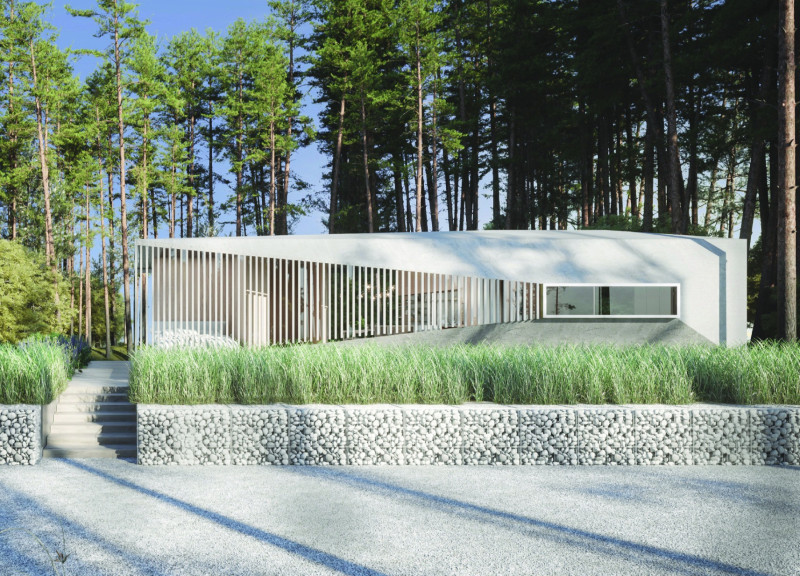5 key facts about this project
At first glance, the architecture reveals a carefully considered dialogue between the building and its landscape. The structure is enveloped in a combination of natural and synthetic materials, showcasing a palette that includes sustainably sourced timber, reinforced concrete, and glass. The wood offers warmth, resonating with the natural hues of the surrounding landscape, while the concrete provides robust structural integrity. The extensive use of glass not only facilitates a connection between the interior spaces and the outside world but also amplifies natural light, promoting energy efficiency through passive solar design.
The layout of the project features open floor plans that allow for flexibility in use, accommodating a range of activities from formal gatherings to casual workshops. High ceilings create a sense of spaciousness, while strategically placed openings ensure optimal natural ventilation. Each room is meticulously designed to maximize functionality while embracing the aesthetic qualities of the materials used. Special attention has been paid to accessibility, with thoughtful pathways that guide visitors seamlessly through the space, reinforcing the project's inclusive nature.
In examining the unique design approaches employed in this project, one can identify an emphasis on biophilic design principles. The integration of green terraces and vertical gardens demonstrates an awareness of environmental sustainability, fostering biodiversity and improving air quality. These features not only enhance the sensory experience of the users but also serve to educate the community about environmental stewardship.
Additionally, the architectural design prominently highlights the interplay of light and shadow throughout the day. The strategic placement of overhangs and awnings captures sunlight during the day while minimizing glare. This nuanced understanding of how light behaves within the architectural context reflects a depth of knowledge regarding both aesthetic and functional design principles.
Further, the project encourages social interaction through its central courtyard, a focal point where community members can gather and connect. This outdoor space emphasizes the importance of communal areas in fostering relationships among users, thereby enhancing the overall purpose of the architectural endeavor. The thoughtful transition between indoor and outdoor spaces merges the building with its environment, promoting a lifestyle that values both personal and communal experiences.
As one explores the broader implications of this architectural design, the narrative of place becomes evident. Each material choice and design decision reflects a commitment to authenticity and a sense of belonging, linking the community not only to the structure but also to the wider context of the region. The project stands as a testament to how architecture can cultivate a sense of identity and purpose.
In conclusion, this architectural project is a reflection of thoughtful design that successfully marries function and form while remaining deeply rooted in its social context. The careful attention to materiality, community needs, and environmental impact results in a building that is not only aesthetically pleasing but also enriches the lives of its users. Readers interested in gaining a deeper understanding of this project are encouraged to explore its architectural plans, architectural sections, architectural designs, and architectural ideas for a comprehensive view of the thoughtful concepts and details that define this remarkable endeavor.


























